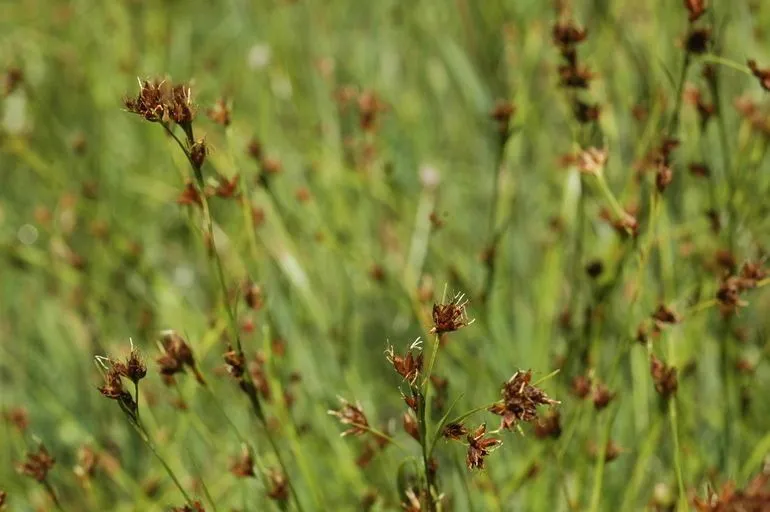
Author: (Michx.) Vahl
Bibliography: Enum. Pl. Obs. 2: 235 (1805)
Year: 1805
Status: accepted
Rank: species
Genus: Rhynchospora
Vegetable: Unknown
Observations: E. Canada to C. & E. U.S.A., Oregon to California
Brownish beaksedge, scientifically known as Rhynchospora capitellata, is a notable member of the Cyperaceae family. First described in the botanical work “Enumeratio Plantarum” in 1805 by Michaux and later expanded upon by Vahl, this plant is distinguished by its unique morphological characteristics and wide geographic distribution.
Habitat and Distribution:
Brownish beaksedge predominantly inhabits regions ranging from Eastern Canada down to Central and Eastern parts of the United States. Its presence extends westward, reaching areas from Oregon to California. This distribution highlights the plant’s adaptability to various ecological zones, from temperate regions to the diverse climates of the American West Coast.
Morphological Features:
Rhynchospora capitellata is characterized by its beak-like bracts that give the plant its common name. The plant exhibits a dense, tufted growth pattern with slender, erect stems that support small, clustered inflorescences. These clusters are primarily found at the tips of the stems and are enveloped by bracts that are often brownish, adding to the plant’s distinct appearance.
Ecological Importance:
As a member of the sedge family, Brownish beaksedge plays a vital role in its native habitats. It is often found in wetlands, marshes, and other moist environments, where it contributes to the stabilization of the soil, preventing erosion and fostering a habitat for various wildlife species. Its presence is an indicator of healthy wetland ecosystems.
Conservation and Uses:
While not commonly cultivated for ornamental purposes, Rhynchospora capitellata is nonetheless important for conservation efforts. The protection of its natural habitats ensures the preservation of biodiversity and the health of wetland ecosystems. Brownish beaksedge may also be studied for its potential uses in phytoremediation, given its propensity to thrive in wetter environments that can suffer from contamination.
In summary, Brownish beaksedge is an ecologically significant species that reflects the health of wetland habitats across a broad swath of North America. Understanding and preserving this plant aids in maintaining the intricate balance within these ecosystems, thus underlining the importance of botanical studies and environmental conservation efforts directed at species like Rhynchospora capitellata.
Eng: brownish beakrush, brownish beaksedge, brownish beaked-rush, small-headed beakrush, capitate beakrush, smallhead beakrush
Fra: rhynchospore à petites têtes
En: Brownish beaksedge, Brownish Beak Sedge, Slender-Fruit Beak Sedge, Smallhead beakrush, Brownish beakrush, Brownish beaked-rush, Small-headed beakrush, Capitate beakrush
Fr: Rhynchospore à petites têtes
Taken Aug 21, 2006 by EOL − Dean Wm. Taylor (cc-by-nc-sa)
Taken Aug 21, 2006 by EOL − Dean Wm. Taylor (cc-by-nc-sa)
Taken Jan 1, 1900 by EOL − USDA NRCS Wetland Science Institute. (public)
Family: Myrtaceae Author: (F.Muell.) K.D.Hill & L.A.S.Johnson Bibliography: Telopea 6: 402 (1995) Year: 1995 Status:…
Family: Rubiaceae Author: Pierre ex A.Froehner Bibliography: Notizbl. Bot. Gart. Berlin-Dahlem 1: 237 (1897) Year:…
Family: Sapindaceae Author: Koidz. Bibliography: J. Coll. Sci. Imp. Univ. Tokyo 32(1): 38 (1911) Year:…
Family: Asteraceae Author: A.Gray Bibliography: Pacif. Railr. Rep.: 107 (1857) Year: 1857 Status: accepted Rank:…
Family: Fabaceae Author: Medik. Bibliography: Vorles. Churpfälz. Phys.-Ökon. Ges. 2: 398 (1787) Year: 1787 Status:…
Family: Aspleniaceae Author: (Cav.) Alston Bibliography: Bull. Misc. Inform. Kew 1932: 309 (1932) Year: 1932…